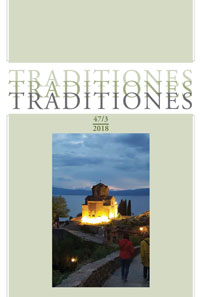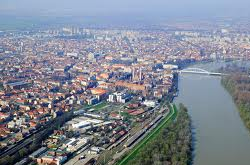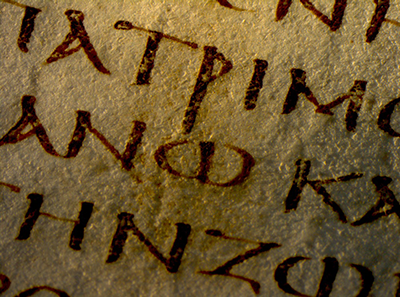Events by the SIEF Working Group Space-lore and Place-lore
Future events
Past events
Lost Places and Abandoned Landscapes
29th – 30th October 2024; University of Szeged, Hungary
Cultural landscapes across the globe have experienced rapid and profound transformations. Throughout the 20th and 21st centuries, economic, political and climatic shifts have compelled various communities to leave their homelands and adapt to new environments. As a result, numerous areas have been depopulated and, local landscape management and practices vanished. Economic downturns and political upheavals have led to the closure of mining sites and industrial centres, as well as military spaces. Our focus is on the phenomena of abandonment and disappearance. We are interested in researching residual elements, both tangible and intangible as well as in histories of abandonment and in practices of re-presenting the past.
Organized by Department of Ethnology and Cultural Anthropology, Univerity of Szeged; SIEF Working Group Space-lore and Place-lore; Holocaust Memorial Center; Hungarian Ethnographic Society
Funded by: Cultural Foundation of Szeged, Solymossy Sándor Association
Second Homes in the 21th century. Changing Images and Practices
Szeged, 6th – 7th October 2022
University of Szeged, Faculty of Arts, Faculty Conference Hall
Szeged, Egyetem str. 2.
Second or double homes have been studied in various fields and its study has tradition in ethnography and other social sciences and humanities. In the workshop we focused on changes of the second homes in the 21st century, when various types of “shelters”, summer cottages, country houses, cabins but also mobile homes or caravanning became newly popular for various reasons. The new migration from cities to the countryside gave in some cases a rise to social conflicts. Newcomers could have different ideas connected with second homes than those who have been members of summer cottage communities for a long time. Specific new perspectives were brought to the topic also by the current pandemic situation.
The event was designed as a two-day workshop. The first day was devoted to the presentation of papers, the second day an excursion was planned with the aim of visiting second homes in Szeged area and in the nearby villages. Participants had an opportunity to study the phenomenon at a local level.
Rural and Small-town Communities: Local heritage and Identities in an urbanising world
29-30 November 2021
In today’s rapidly urbanising world, rural and small-town communities are often wrongly considered as peripheral to dominant urban centres, where the most meaningful activities in social, political, and economic life are considered to occur. This is nothing new in light of the trend towards so called ‘global cities’, strategic locales whose concentration of political, cultural, and financial capital have direct and tangible effect on global cultural, political, and economic activities. However, the impacts of such trends are not a closed loop, constrained within a global network of urban centres. What happens in urban centres also visibly – and in a no-simple way – affects local ways of life in still vibrant rural and small-town societies.
In many countries across the world, we see this in particular through the effects of a steady corrosion of social welfare – a phenomenon driven by an observable shift towards neoliberal policies preoccupied with entrepreneurship, the drift from small-scale rural economies to industrial agriculture, and the move from manufacturing-based economies to tourism and service-based ones. Although these shifts have stimulated local economies to a certain degree, they have also exposed local communities to increasing wealth gaps and socio-economic stress. In a world where a majority of resources are being concentrated in growing urban landscapes, a wave of protests is rising in these “peripheral” localities. As we have observed in recent years, these social turbulences are often directly related to – or exploited by – current national-conservative populist movements spreading across Europe and beyond. However, we believe that contemporary transformations in rural and small-town areas also establish a range of new possibilities, including locally grounded social enterprises, activism and many other creative responses to global pressures such as climate change. Further, these complex grassroot processes bring a new energy to local communities that powers the re-imagination of local history, heritage and identities.
The conference Rural and Small-town Communities: Local heritage and Identities in an urbanising world will include field-based investigations that explore how rural and small-town societies are responding to challenges brought by various policies, economies and shifting social values being constituted mainly in urban centres. Presentations focus on one or more of the conference’s three thematic areas:
Panel at SIEF2019 14th Congress, Santiago de Compostela, Spain, 14-17 April 2019
Landscape - the instructions manual: Negotiating the meanings of landscape; convenors Jiří Woitsch, László Mód and Karolina Pauknerova
Spaces and Places in Transition: Urban and Rural Transformations in Central and Eastern Europe.
Conference of the WG Space-lore and Place-lorePrague, Czech Republic , November 7 to 10, 2018
Find out more on the conference website here.
Monuments and Memorial Sites in Changing Social-Political Contexts
Szeged, 21-24 November 2017Faculty Conference Hall, University of Szeged, Faculty of Arts
Szeged, Egyetem str. 2.
Download the programme here

The constructed knowledge about the past could be often visible through different memorial sites and monuments. Their role and function had undergone many changes. During the second half of the 19th century all over Europe plenty of monuments were erected which connected the symbols of the mythical past to defined places in the context of the modern nation state. After the WWI new practice unfolded among the warfaring countries in the name of the cult of the soldier heroes. In the second half of the 20th century the in Eastern Europe communist regimes had been constructing their own memorial sites, which were often used to exercise power in a symbolic way. However, memorial culture has undergone significant changes in the Western Europe in that time as well. After the collapse of communism the memorial practices had been taking new forms, but at the same time many social conflicts emerged.
We would like to invite scholars (ethnologists, anthropologists, historians, art historians etc.) who can resume their researches on the following themes: memorial places and national identities; monuments as the representations of past; memory of wars and monuments; monuments and commemorative rituals; abandoned memorial places, migration and change of power; erecting monuments and social conflicts, contesting memories and monuments, the role of monuments in the constructing of new cultural landscapes, reinterpretation and changing role of memorial sites, symbols of monuments, changes in the relation between memory and communities etc.
The language of the workshop was in English. The duration of papers was set at 20 minutes, and was followed by 10 minutes of discussion. The organisers reserved the right to accept or reject the papers that were submitted. We are planning to publish the papers after the workshop. There was no fee for participation in the workshop. Participants were required to cover their own costs except meals (lunch, dinner) and excursion.
 Publication - “Space-lore and Place-lore”
Working Group
Publication - “Space-lore and Place-lore”
Working Group
On March 2017 Göttingen SIEF conference WG Space-lore and
Place-lore proposed two panels.
The second panel “Sacred Space and Place and their Symbolic
Adoption” (Ingrid Slavec Gradišnik, Ljubljana and Jelka Vince
Pallua, Zagreb) focused on the symbolic representation of space and
mental mapping – the symbolic adoption and inscribing of meaning of
the individual, as well as of the community into the (sacred) space
and place.
The selection of four papers, out of ten read at the second panel was published in 'Traditiones' Vol. 47, No 3, 2018. (Volume editors: Ingrid Slavec Gradišnik and Jelka Vince Pallua)
SIEF2017 13th Congress: Göttingen, Germany
Sacred space and place and their symbolic adoption
Göttingen, Germany, 27 March, 2017
Location: KWZ 1.731
The relationship of ethnology and cultural anthropology towards the notions of space and place has been manifold and is offering a multitude of theoretically and methodologically different approaches. It is at the same time closely connected with different ways of dwelling - with home and its making, material and immaterial, with crafting and experiencing space and place. We are inviting you to focus on the notions of sacred space and place, the symbolic adoption of them by the symbolic inscribing of meaning into space and place. By stepping on the ground of sacred space we are at the same time involved with rituals that don't only set apart particular times as sacred, but certain spaces as well. It is ritual, not actual physical structures (temples, houses of worship), that creates sacred space. We would also like to call your attention not only to the experience of space in temples and the houses of worship where "God dwells", but also to the houses we live in and their immaterial making. Namely, we know that some places in the house can be culturally constructed physical places filled in by the meaning and be identified as ritually consecrated places like for instance the threshold, hearth, roof, gable, the place under the main balk etc., places important for various customary ritual functions. The mentioned physical, built-up spaces transform themselves into the symbolic places by "making of place" by the ritual as the pathway to the sacred.
Göttingen, Germany, 29 March, 2017
KWZ 0.607
The historical-geographical paradigm was one the most significant theories in the history of discipline. It has moved ethnology, especially in the field of study of material culture - and above all dwelling - very close to Kuhnian "normal science" and a plenty of exceptionally influential (including many controversial e.g. Hauslandschaften und Kulturbewegungen im östlichen Mitteleuropa by Bruno Schier) ethnological works were based on cartographic method. Moreover, after the WW II historical-geographical paradigm and ethnocartography contributed a lot to unprecedented networking of ethnologists across Europe culminating in the project of European ethnological atlas. However, at the latest from 1980s, cartographic method itself has been widely disputed and nowadays it is mostly considered having little relevance for the discipline. The panel thus aims to critically evaluate the history of European ethnocartography with the special attention to application of historical-geographical paradigm in the field of study of houses, dwelling and creation of cultural landscape. Above that, we feel the need to discuss also contemporary projects based on revision and re-interpretation of old ethnological maps or sources connected to preparation of ethnological atlases. And last but not least following question should be answered: How "new" technical means (GIS), media (Internet) and approaches (digital humanities) could influence and even revitalize "old school" ethnocartography. Is it possible to interconnect cartographic ethnology and STS studies and ANT as already has been suggested? And generally - is there any future for cartographic ethnology not only in the field of study of material culture?
 Szeged,
Hungary
Szeged,
Hungary"On the Train" Excursion and Pilgrim Trains in the 19th-21st Centuries
Szeged, Hungary, 16-17-18 October 2014
Faculty Conference Hall, University of Szeged, Faculty of Arts,
Szeged, Egyetem u. 2.
The spread of public transport in the mid-19th century changed people’s travel habits. The most striking aspect of this was that the low fares and the speed led to its mass use. This not only had economic consequences, it also brought change in travel for religious and cultural purposes where new forms appeared: the special trains. The more prosperous set out to see the world, while religious people visited distant shrines. In one or two days they were able to travel a distance that had once taken much longer to cover. This circumstance transformed the means of fast transport, the train, into a special space where people spend days. The train had to be made suitable for many people to live there together: to have meals, attend to their toilet needs or even practice their religion. This form of mass tourism also influenced both the places visited on the way and the destinations. It created the need to operate travel offices, also within international frames, to create and develop institutions providing services. It therefore influenced the location and space in which it appeared and operated. The processes that began, the gradually merging railways, stations and services for mass tourism, the places that started to resemble each other internationally, the virtualising spaces of organisation foreshadow the forms of post-modern fluid places that we experience today, that have been summed up in the concept of non-places (Marc Augé). The train became a moving place that connects various other places.
Special excursion trains
The railways enabled the more prosperous sectors and then increasingly
also others to visit distant destinations within the country and later
also abroad. The first organised special excursion train departed for
England in 1841. This pattern was soon followed by other countries.
Travel companies were set up to organise mass travel, at first on the
national level and later within international frames. This favoured a
number of spas, seaside and mountain resorts, and often also towns
where travellers broke their journey for a few hours or a day, took
accommodation and visited the sights and museums.
Special pilgrim trains
As the railways grew into a European network, people also reached
distant shrines. Long-distance pilgrimages were revived and grew to a
mass scale. This contributed to the popularity of a few shrines, such
as Lourdes. But special trains were organised for pilgrimages within
individual countries too.
Ethnological and anthropological research has paid little attention to this form of mass pilgrimages that is still alive and now has traditional forms in many countries of Europe. These include the pilgrimage train for the sick from Belgium to Lourdes in France, and in the past decade a pilgrim train for Hungarian Catholics from Budapest to Częstochowa. The papers presented will analyse the past and present organisation and course of such trips, their influence on the shrines, as well as the spread of devotional forms, votive objects, songs and religious souvenirs, within the country and internationally.
We would like to learn about the excursion and pilgrim trains as special places as well as about the circumstances that create these special places and spaces. Therefore we look forward to receiving papers on both themes (special trains for secular and religious purposes) seen from the angle of how they shaped the various spaces and localities of travel, its social environment and frames. We would like to know more about their organisers, how they were organised, the course of the journey, and the influence they had on the railways and the destinations. Newspaper articles and books of recollections have been published on the journeys, as well as guidebooks providing information for travellers. The souvenir industry flourished, as did the use of postcards from the end of the 19th century.
The train became a special place on which the travellers, excursionists and pilgrims spent whole days, but we know little about how they passed the time.
These trips also raised special requirements for the trains. They had to be made fit for people to spend several days on them.
We do not have sufficient information on the social background of the travellers. Groups of various size must have been formed for the occasion and contacts established between people from distant places.
Formal requirements
The language of the workshop was in English. The duration of papers
was set at 20 minutes, followed by 10 minutes of discussion. The two
days gave time for only 20 papers.
The plan is to publish the papers after the workshop in the form of studies. Studies may also include illustrations (images, maps, graphs, etc.). Please find attached the formal requirements for studies.
There was no fee for participation in the workshop. Participants were required to cover their own costs.





